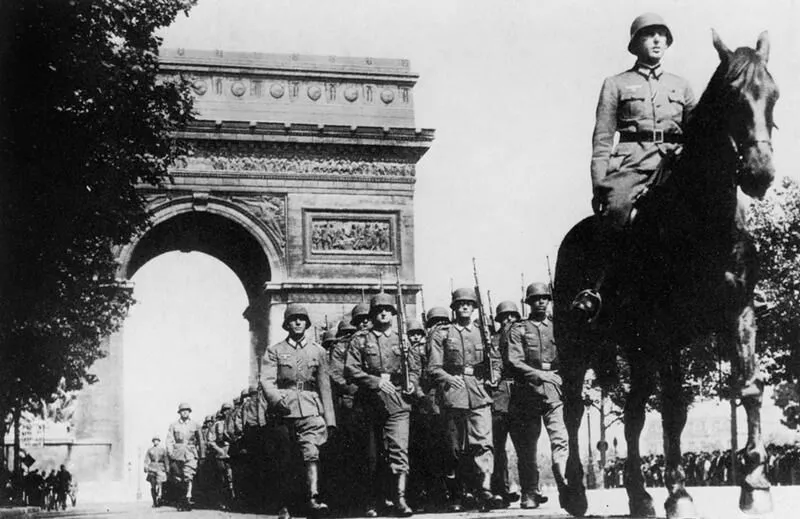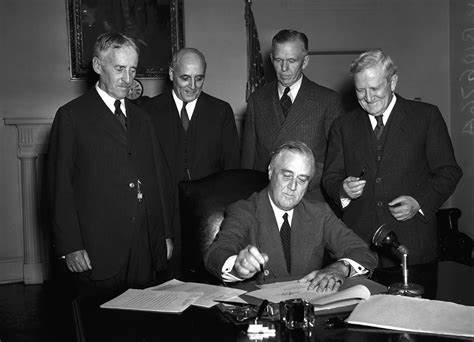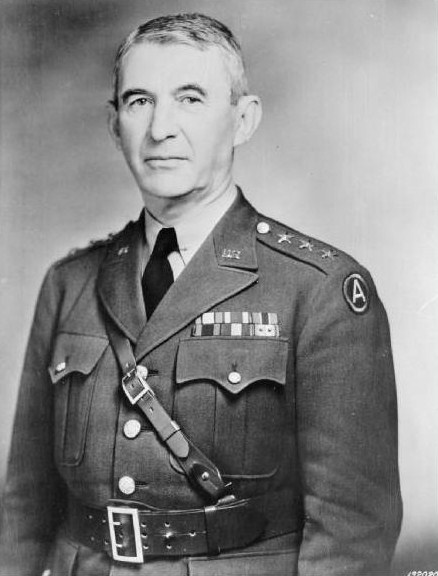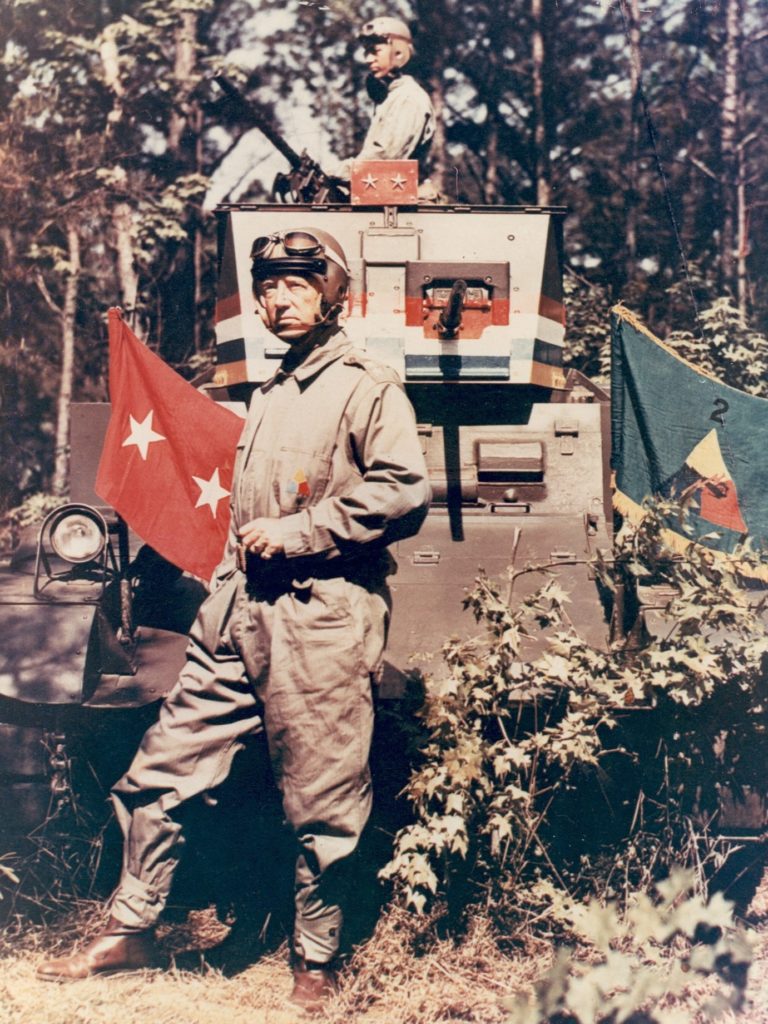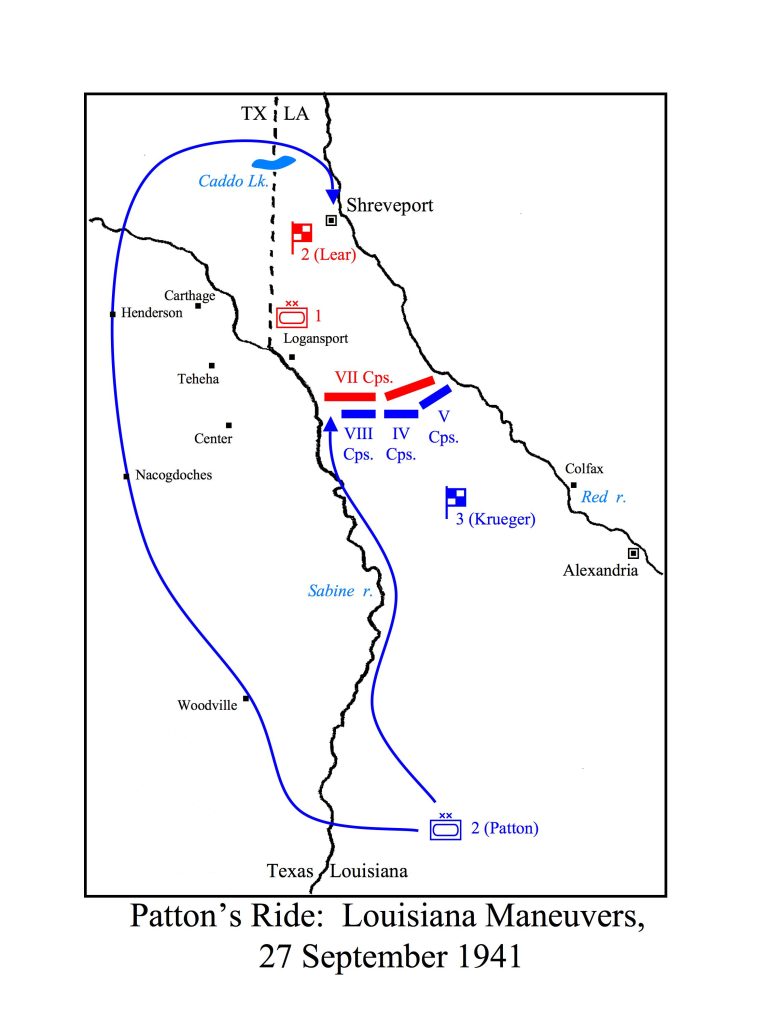By Kevin Brown
The rise of Hitler’s Germany and new strategies like Blitzkrieg (“lightning war”), which combined tanks, infantry, and artillery to overwhelm enemy forces, shocked the American military establishment. The Third Reich’s rapid sweep through Poland and France from 1939 to 1940 made the dire situation clear, The American military was unprepared for modern war.
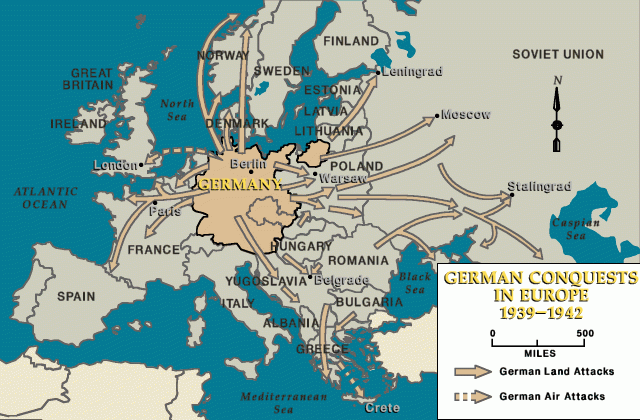
The German Blitzkrieg-1939-1942
(Courtesy of the United States Holocaust Memorial Museum)
Hitler’s Wehrmacht Enters Paris-June 1940
(Courtesy of Granger NYC)
Rapid changes in technology and tactics in the 1930s left strategists with outdated impressions of what a future war would look like. Observers in the interwar period failed to imagine another global conflict after the catastrophes of the Great War left millions of dead. Popular thinking perpetuated the lie that any future fight would resemble the First World War, with forces clashing along static lines rather than rapid movements.
America’s armed services were in poor condition in the early 1940s; the Great Depression had plunged the world into a deep financial crisis, and challenging economic times translated into cuts to the US military, harming morale and manpower. This significantly impacted the Army, with this branch comprising less than 200,000 poorly trained and equipped men in 1939.
FDR Signs the Nation’s First Peacetime Draft into Law-September 16, 1940
(Courtesy of the New York Daily News)
These developments prompted President Franklin Delano Roosevelt to institute the nation’s first peace-time draft and federalize the National Guard in a push to increase the readiness of the nation’s forces. Over a year before the US was drawn into the war by the Japanese attack on Pearl Harbor, National Guard divisions were mobilized for year-long exercises. The administration tasked the Guard with leading the charge to modernize the Army with a series of war games known as the Louisiana Maneuvers with a yearlong initial mobilization. Conducting these exercises contributed to the development of senior leaders like General(s) George Patton, George C. Marshall, and Lesley McNair who rose even further in their careers during WWII.
These exercises set in Louisiana’s swamplands took on a renewed sense of urgency after Hitler’s Wehrmacht, which had invaded the Soviet Union in June quickly approached Moscow. The National Guard played the leading role in the exercise, with notable divisions like the 34th, and 35th, serving critical roles throughout the war. Guardsmen like Maj. Gen. Ralph E. Truman (a cousin of future President Harry Truman) served as commanders during the maneuvers.
The plans for the Louisiana Maneuvers called for two forces- a Blue Army and a Red one to engage in a series of actions against each other. These armies represented fictitious countries that were warring over rights to the Mississippi River. Planners divided the battle narrative into phases, giving each Army a chance to act offensively.
The Red Army was under the command of Lt. Gen. Ben Lear, one of the most senior general grade officers at the time. The Blue forces were led by Lt. Gen. Walter Krueger at the height of his career in the early 1940’s. Strict directives to all commanders that the exercises held under wartime conditions added to the realism of the Louisiana Maneuvers. All commanders from company grade upwards were allowed maximum flexibility to foster creativity and the ability to adapt to unexpected circumstances.
Lt. Gen. Ben Lear-Commander of the Red Army
(Courtesy of FindaGrave.com)
Lt. Gen. Walter Krueger- the leader of the Blue Army
(Courtesy of US Army South)
Phase I called for the Red Army to invade blue territory and destroy forces concentrated around Louisiana’s Lake Charles. This phase tasked Red Forces to move quickly to overpower the enemy. Blue troops stalled the red advance and prevented their armored concentrations from breaking through defensive lines. The Phase I mission was meant to test American land forces’ mobility and striking power against a potential foe like the Wehrmacht.
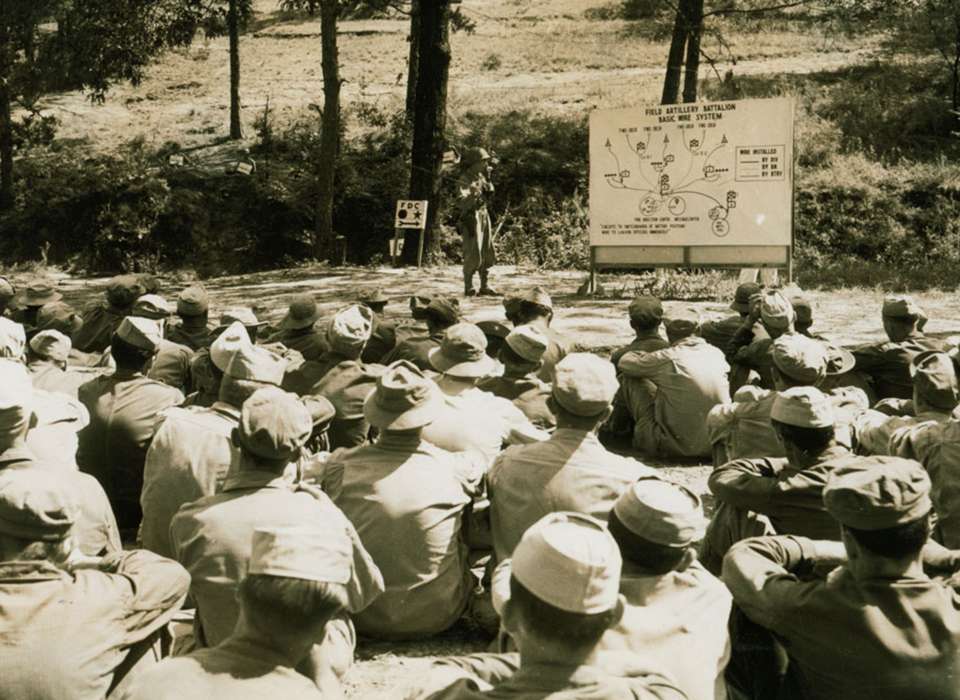
Troops Listening to Briefings During the Louisiana Maneuvers.
(Courtesy of the National WWII Museum)
In the second phase of the maneuvers, the roles were reversed, with the Red Army now on the defensive against a numerically superior Blue force for control of Shreveport. Lt. Gen Lear planned a delay and withdrawal to trade territory for a time.
Lt. General Krueger’s blue Army planned a blunt force attack on Red’s front like a German blitzkrieg. Krugear also relied on Major General George Patton to drive the main thrust of his armored heavy offensive towards the Red forces.
General Patton became the show’s star when he took his 2nd Armored Division outside the designated maneuver area and decapitated the rear flanks of the Red forces. Patton’s actions during the Louisiana Maneuvers spoke to the spirit of the wargames as he demonstrated ingenuity by shopping at local gas stations along his advance route instead of using his Army-supplied rations to sustain his forces. These moves allowed the blue parties to reach Shreveport, with one of the blue battalions capturing the entire staff of a red task force.
Maj. Gen. George Patton During the 2nd Phase of the Maneuvers.
(Courtesy of US Army TRADOC)
Maj. Gen. Patton’s unconventional moves to seize the upper hand for the blue Army during the Louisiana maneuvers prompted protest from Lt. Gen. Ben Lear. Patton responded, “I am unaware of the existence of any rules in war.”
The Louisiana Maneuvers put the American Army on a better footing than its enemies through sustained maneuver warfare practice. The exercises reformed the Army’s leadership; for example, Chief of Staff General George C. Marshall pushed out 31 out of 41 senior Army commanders to make way for younger leadership.
(Courtesy of the National WWII Museum)
By serving as a laboratory for new concepts, the Maneuvers also helped lay the seeds for an “American way of War” that brought the Army into the modern era and allowed it to develop its own operational concepts. The Louisiana Maneuvers were so historically successful that the US military would hold another round of exercises in the early 1990’s. This phenomenon would see the Army through WWII and the Cold War to the 2003 invasion of Iraq, as the Total Force became a master of maneuver warfare.
